Filter by
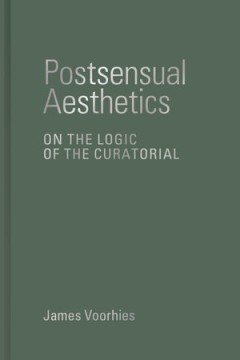
Postsensual Aesthetics: On the Logic of the Curatorial
In this original work of aesthetic theory, James Voorhies argues that we live in the shadow of old ways of thinking about art that emphasize the immediate visual experience of an autonomous art object. But theory must change as artistic and curatorial production has changed. It should encompass the full range of activities through which we encounter art and exhibitions, in which reading and thi…
- Edition
- -
- ISBN/ISSN
- 9780262372855
- Collation
- -
- Series Title
- -
- Call Number
- 111 VOO p

Aesthetics and the Embodied Mind: Beyond Art Theory and the Cartesian Mind-Bo…
The project of naturalizing human consciousness/experience has made great technical strides (e.g., in mapping areas of brain activity), but has been hampered in many cases by its uncritical reliance on a dualistic “Cartesian” paradigm (though as some of the authors in the collection point out, assumptions drawn from Plato and from Kant also play a role). The present volume proposes a versio…
- Edition
- 1
- ISBN/ISSN
- 978-94-017-9379-7
- Collation
- XIII, 330
- Series Title
- Contributions to Phenomenology
- Call Number
- 111.8 AES a

Contingent Encounters Improvisation in Music and Everyday Life
Contingent Encounters offers a sustained comparative study of improvisation as it appears between music and everyday life. Drawing on work in musicology, cultural studies, and critical improvisation studies, as well as his own performing experience, Dan DiPiero argues that comparing improvisation across domains calls into question how improvisation is typically recognized. By comparing the musi…
- Edition
- -
- ISBN/ISSN
- 9780472903115
- Collation
- -
- Series Title
- -
- Call Number
- -

A Somaesthetics of Performative Beauty Tangoing Desire and Nostalgia
actions, aesthetics, Argentine tango, awareness, dance studies, enactivism, eros, Falk Heinrich, freedom, grace, movements, performance studies, performative beauty, phenomenology, poiesis, social dancing, somaesthetics
- Edition
- -
- ISBN/ISSN
- 9781003355311
- Collation
- -
- Series Title
- -
- Call Number
- -

Facing Poetry Alexander Gottlieb Baumgarten's Theory of Literature
What is Literature? According to Alexander Gottlieb Baumgarten, Literature is perfect sensate discourse. Based on this insight Baumgarten offers the first modern theory of literature. His uniquely holistic approach encompasses a methodology, epistemology, metaphysics, narratology, and ethics.
- Edition
- -
- ISBN/ISSN
- -
- Collation
- -
- Series Title
- -
- Call Number
- -
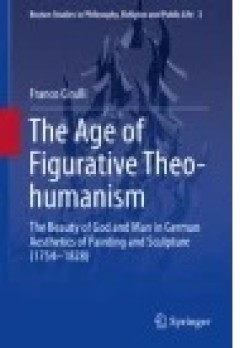
The Age of Figurative Theo-humanism
This is a comprehensive, integrated account of eighteenth and early nineteenth century German figurative aesthetics. The author focuses on the theologically-minded discourse on the visual arts that unfolded in Germany, circa 1754-1828, to critique the assumption that German romanticism and idealism pursued a formalist worship of beauty and of unbridled artistic autonomy. This book foregrounds w…
- Edition
- -
- ISBN/ISSN
- 978-3-319-10000-5
- Collation
- XVIII, 191
- Series Title
- Boston Studies in Philosophy, Religion and Public Life
- Call Number
- -
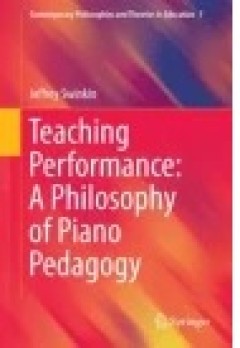
Teaching Performance: A Philosophy Of Piano Pedagogy
The architects of absolute music (Hanslick, Schopenhauer, and others) held that it is precisely because instrumental music lacks language and thus any overt connection to the non-musical world that it is able to expose essential elements of that world. More particularly, for these philosophers, it is the density of musical structure—the intricate interplay among purely musical elements—that…
- Edition
- -
- ISBN/ISSN
- 978-3-319-12514-5
- Collation
- XXI, 229
- Series Title
- Contemporary Philosophies and Theories in Education
- Call Number
- -
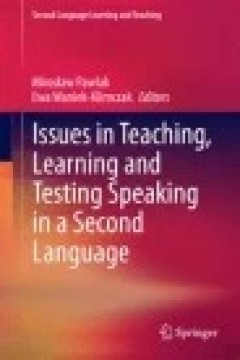
Issues of Contemporary Art and Aesthetics in Chinese Context
This book discusses how China’s transformations in the last century have shaped its arts and its philosophical aesthetics. For instance, how have political, economic and cultural changes shaped its aesthetic developments? Further, how have its long-standing beliefs and traditions clashed with modernizing desires and forces, and how have these changes materialized in artistic manifestations? I…
- Edition
- -
- ISBN/ISSN
- 978-3-662-46510-3
- Collation
- -
- Series Title
- -
- Call Number
- -
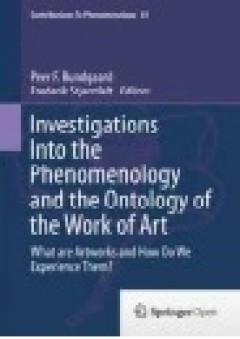
Investigations Into the Phenomenology and the Ontology of the Work of Art: Wh…
This book investigates the nature of aesthetic experience and aesthetic objects. Written by leading philosophers, psychologists, literary scholars and semioticians, the book addresses two intertwined issues. The first is related to the phenomenology of aesthetic experience: The understanding of how human beings respond to artworks, how we process linguistic or visual information, and what pr…
- Edition
- -
- ISBN/ISSN
- 978-3-319-14090-2
- Collation
- -
- Series Title
- -
- Call Number
- -
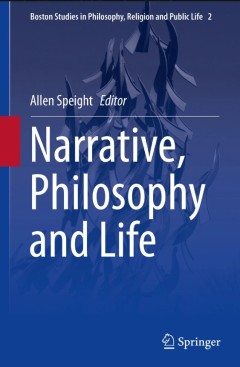
Narrative, Philosophy and Life
This notable collection provides an interdisciplinary platform for prominent thinkers who have all made significant recent contributions to exploring the nexus of philosophy and narrative. It includes the latest assessments of several key positions in the current philosophical debate. These perspectives underpin a range of thematic strands exploring the influence of narrative on notions of self…
- Edition
- 1
- ISBN/ISSN
- 978-94-017-9348-3
- Collation
- IX, 210
- Series Title
- Boston Studies in Philosophy, Religion and Public Life
- Call Number
- -
 Computer Science, Information & General Works
Computer Science, Information & General Works  Philosophy & Psychology
Philosophy & Psychology  Religion
Religion  Social Sciences
Social Sciences  Language
Language  Pure Science
Pure Science  Applied Sciences
Applied Sciences  Art & Recreation
Art & Recreation  Literature
Literature  History & Geography
History & Geography